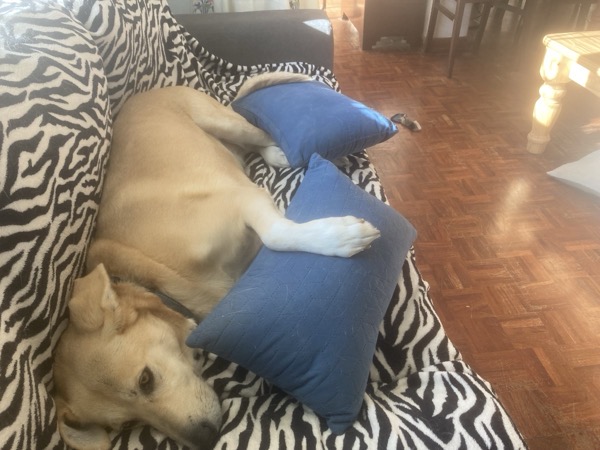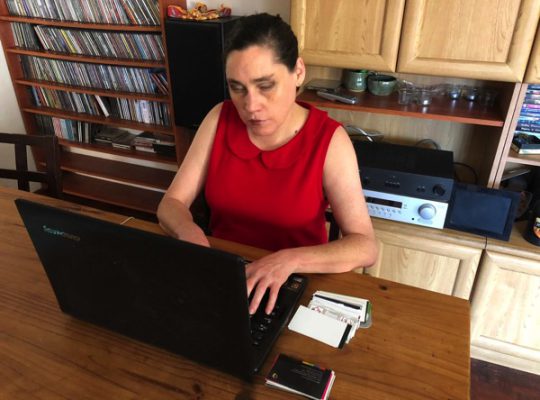
Over the past few months I’ve seen numerous articles about the potential risks associated with using artificial intelligence (AI) to accomplish tasks. People seem to fear that using AI will have negative results, ranging from accusations of plagiarism to the death of creativity. Simultaneously, I have seen numerous online courses and trainings that promise to show how AI can help content creators by saving them time and effort. It is all very confusing, because I can see how potentially all of these could be true.
One thing is for sure – AI is a buzz word right now.
Today I’d like to look at a way that AI has significantly helped me to become more independent. Using AI, through a number of different apps on my mobile phone, I am able to get descriptions of what is in my photographs without sighted assistance. There are a number of apps that can do this – seeing AI and Be My AI are the ones I use most often on IOS.
I know that I, like most of us, have been using AI for some time. For years I’ve been using AI to help me convert text to speech in a number of different ways. I’ve even used AI to help me get an idea of what is in images, but the amount of information I’ve been able to access has not been great. Until now.
Here’s why this has been such a game-changer for me. Previously I would have to get a sighted person, usually my husband, to tell me about the photographs on my phone and laptop. I regularly missed visual jokes sent by friends and family on WhatsApp groups, not to mention posters for business-related events and opportunities unless someone described them for me. In order to manage my photo library on my phone, I would again need to ask my husband. And, in a blog post like this, I would be able to give my fellow blind readers only a vague idea of what was in the image shared with the post. I suppose these aren’t really hardships in the greater scheme of things, but still… I can now do so much more on my own. The freedom and independence AI has given me is amazing.
I’d like to give you an example. For ages, I’ve had an image on my phone. Previously all I knew from my phone’s in-built image description functionality was that it was of a light brown dog lying on a couch
with their head on a pillow. You’ve guessed it – it’s the image from this post. Now, since I took the photograph, I know the dog is my rescue, Allie. But, beyond that, I couldn’t really add to what my phone in-built recognition had already told me. Below is what I learned from running the image through the Be My AI app.
“The picture shows a cozy indoor setting with a dog lying on a couch. The couch has a zebra print cover and there are two blue pillows on it. The dog is a light tan color, possibly a Labrador mix, and is lying in a relaxed position with its head resting on one of the blue pillows. Its front paws are stretched out and one of them is resting on the other blue pillow. The floor is made of parquet in a herringbone pattern and there is a glimpse of a wooden table with a carved leg in the background. The room is well-lit, possibly by natural light.”
The richness of this description is just so far removed from the general description I would have been able to give without sighted assistance. To be honest, it is probably richer than I would have been able to do even with sighted assistance, as typically a sighted person will focus on the most important parts of the description in the interest of time. If I want more detail, I will usually have to ask for it.
As an interesting aside, my sense is that Be My AI particularly sees the world through proverbial rose-tinted glasses. I find it amusing that indoor scenes are often described as cosy or homely, outdoor scenes are generally peaceful, and dogs are inevitably described as gentle, cute, or in similar positive terms. Only once have I had an image described as somewhat gloomy. And never anything more negative than that. At least, not so far. And I’m okay with the app being inclined to see the world in a positive light – in my opinion we are exposed to too much negativity already.
Okay, I know that these AI apps are not 100% accurate all the time. Most of them are very clear about that fact. I also know that they are in some ways limited, as they cannot currently identify people by name, and are unable to access images from some platforms like Facebook. These limitations may be due to privacy and permissions issues. So not all photographs and images are yet fully accessible to me without sighted assistance. But I can still access more images than I could before.
When it comes down to it, the potential of AI is immense. And no doubt as a tool it will be used for both positive and negative purposes. But, for me and multiple other blind people across the world, AI has been a source of greater independence and freedom and will no doubt continue to be so. Which is exciting for us.






Thank you, Lois, for giving the AI detail of what was in the picture of Allie on the couch. Also for your nuanced evaluation of AI.
I was moved by your final Paws for thought on the sad passing of your companion and guide, Fiji. It made me thoughtful to appreciate the antics of our two aging Daschunds of the past 15 years.